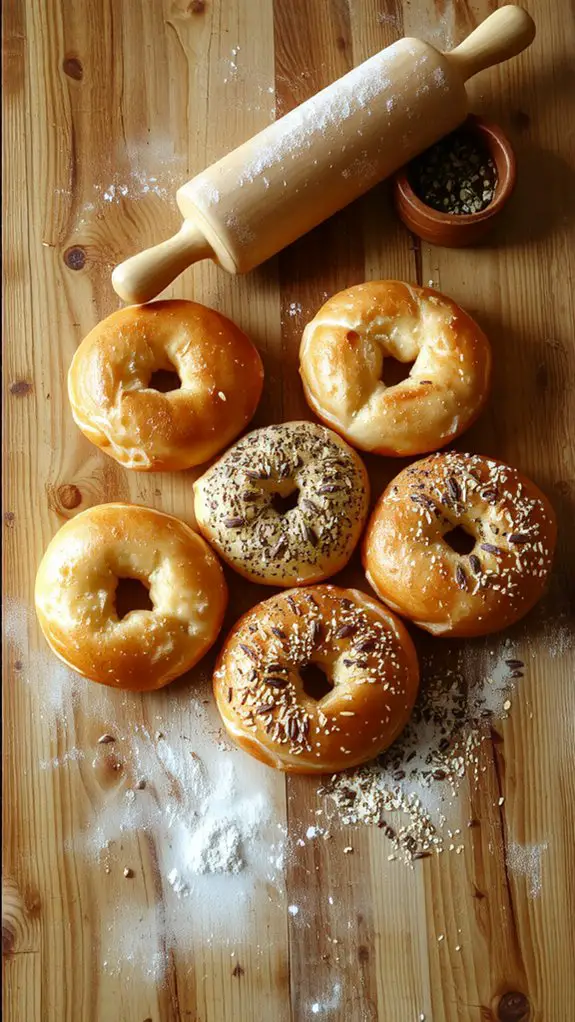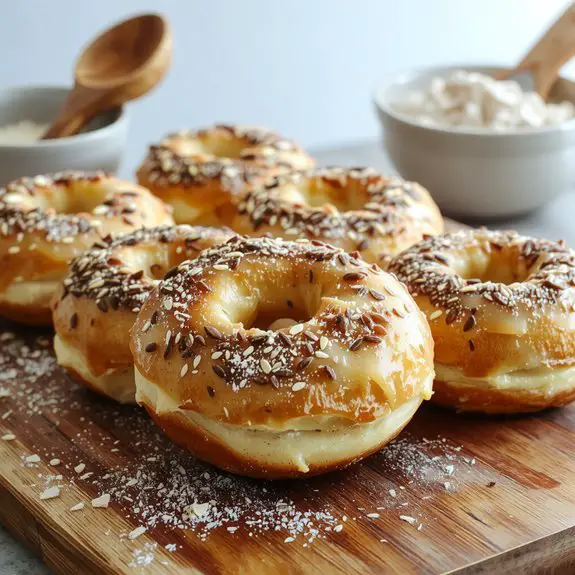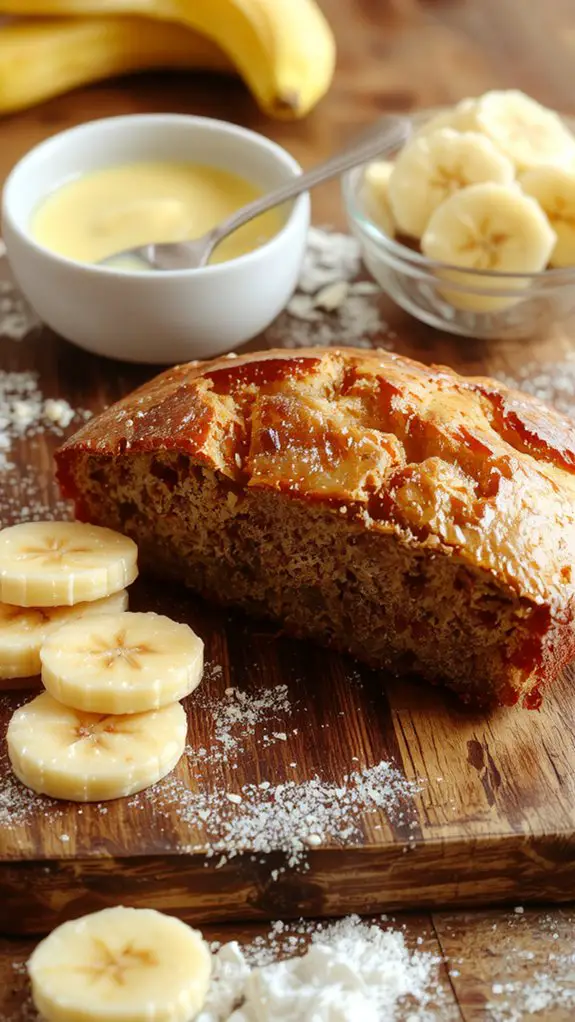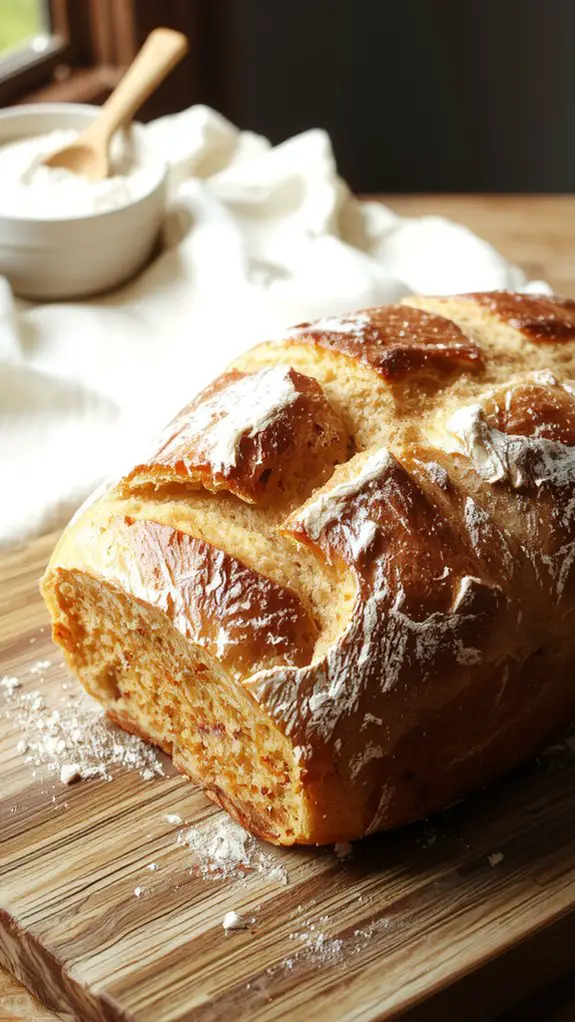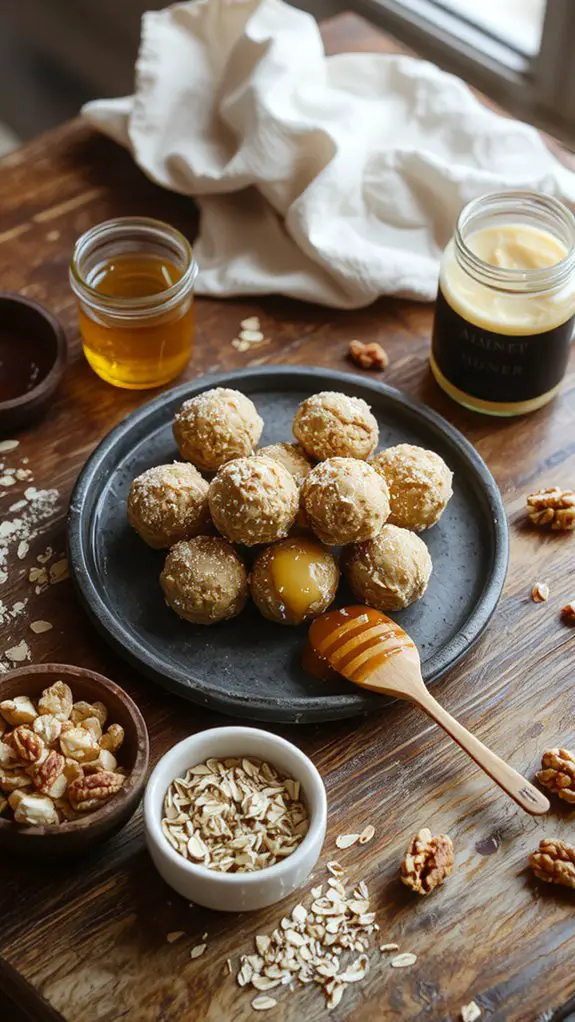Recipe
Homemade bagels are a game-changer, and once you try this recipe, you’ll never go back to store-bought. Trust me, there’s something magical about sinking your teeth into a freshly baked bagel—crispy on the outside, chewy on the inside, with that unmistakable flavor you can only get from making them yourself.
What sets this recipe apart? We skip the shortcuts and use simple, high-quality ingredients like bread flour and a touch of honey for that perfect balance of sweetness and bite. Plus, boiling the dough before baking gives them that iconic texture you’re craving.
I’ve made these more times than I can count, and they’ve never failed to impress—whether it’s a lazy Sunday morning or a brunch gathering with friends. Get ready for your kitchen to smell like a New York bakery and your taste buds to thank you. Let’s do this!
Ingredients
Essential Ingredients
- Bread flour: The high protein content is vital for that signature chewiness—don’t substitute with all-purpose flour.
- Water: Use warm water (around 110°F) to activate the yeast efficiently.
- Active dry yeast: Fresh yeast guarantees a good rise; check the expiration date to avoid flat bagels.
- Salt: Enhances flavor and strengthens the gluten structure for that perfect texture.
Sweeteners
– Sugar or malt syrup: Adds subtle sweetness and helps with browning. Malt syrup is traditional, but honey or brown sugar work as substitutes.
Boiling Components
- Baking soda: Creates the alkaline water bath for that glossy, golden crust.
- Optional add-ins: Honey or malt syrup in the boiling water can enhance flavor and color.
Optional Toppings
- Everything bagel seasoning: A mix of sesame seeds, garlic, onion, poppy seeds, and salt for a classic flavor.
- Sesame seeds or poppy seeds: Add texture and a traditional touch.
Pro Tip: For bagels with extra shine, brush them with an egg wash before baking.
And remember, patience is key—letting the dough rest and rise properly guarantees the perfect texture.
How to Make the Best Classic Bagel Recipe Details
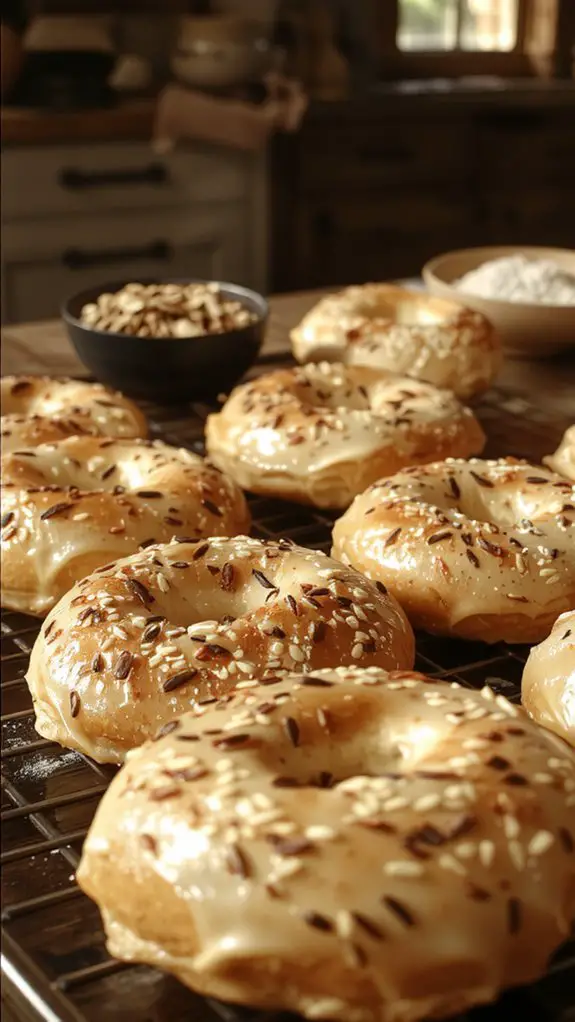
- Gather your ingredients and equipment. Measure everything beforehand to streamline the process. Having everything ready guarantees a smooth workflow and prevents scrambling mid-recipe. Pro Tip: Use a kitchen scale for precise measurements, especially for flour and water, as accuracy is key for bagel texture.
- Mix the dough. Combine warm water, yeast, and sugar in a large bowl, letting it sit for 5 minutes until frothy. This activates the yeast, securing your bagels rise properly.
- Add flour and salt, mixing until a shaggy dough forms. Pro Tip: If the dough feels dry, add water 1 teaspoon at a time until it comes together.
- Knead the dough. Transfer the dough to a floured surface and knead for about 10 minutes until smooth and elastic. This develops the gluten, giving the bagels their chewy texture. Watch-Out Warning: Avoid over-flouring the surface, as it can dry out the dough.
- Let the dough rise. Place the dough in a lightly oiled bowl, cover with a damp towel, and let it rest for 1 hour in a warm spot until doubled in size. The rise is vital for achieving light, airy bagels. Pro Tip: If your kitchen is cool, place the bowl in an oven with the light on for a warm environment.
- Shape the bagels. Punch down the dough and divide it into 8 equal portions. Roll each piece into a ball, then poke a hole in the center and stretch it to form a bagel shape. Visual Cue: The hole should be about 1.5 inches wide, as it will shrink during boiling and baking.
- Boil the bagels. Bring a pot of water to a gentle simmer and add a tablespoon of sugar or honey. Boil each bagel for 30 seconds per side. This step creates the signature chewy crust. Why It Matters: The boiling process gelatinizes the starches on the surface, setting the texture before baking.
- Add toppings (optional). Place boiled bagels on a parchment-lined baking sheet and sprinkle with toppings like sesame seeds, poppy seeds, or everything seasoning. Pro Tip: Brush the bagels with an egg wash for better topping adherence.
- Bake the bagels. Preheat your oven to 425°F (220°C) and bake the bagels for 20–25 minutes until golden brown. Visual Cue: The bagels should sound hollow when tapped on the bottom. Pro Tip: Rotate the baking sheet halfway through for even browning.
- Cool and enjoy. Let the bagels cool on a wire rack for at least 15 minutes before slicing. This prevents them from becoming soggy. Flexibility: Store in an airtight container for up to 3 days or freeze for longer storage.
Pro Tip: For fresh bagels anytime, freeze them after cooling and toast straight from the freezer for a just-baked taste.
Nutrition
Here’s the nutritional breakdown for one homemade bagel.
| Nutrient | Amount |
|---|---|
| Calories | 245 |
| Protein | 9g |
| Carbohydrates | 48g |
| Sugar | 3g |
| Fat | 1g |
| Fiber | 2g |
| Sodium | 420mg |
Chef Tips
When I’m making bagels, I’ve found that using high-gluten flour makes a noticeable difference in texture. Kneading the dough until smooth guarantees proper gluten development.
Letting it rest overnight improves flavor. Boiling with baking soda gives that classic crust.
Don’t overhandle the dough after shaping—handle gently to maintain structure. Finally, bake on a preheated stone for even heat distribution and a perfect chew.
Frequently Asked Questions
Can I Make Bagels Without a Stand Mixer?
I’ve made bagels without a stand mixer—it’s totally doable. I knead the dough by hand until it’s smooth and elastic; it takes effort but works just fine. A bowl and my hands are all I need.
How Do I Store Homemade Bagels to Keep Them Fresh?
I store my homemade bagels in an airtight bag or container at room temp for 1–2 days. For longer freshness, I freeze them wrapped in plastic or foil and thaw them when I’m ready to eat.
Can I Freeze the Dough Before Baking?
Yes, I can freeze the dough before baking. I’d shape it into bagels, freeze them on a tray, then transfer to a bag. When I’m ready, I’ll thaw, boil, and bake for fresh bagels anytime.
What’s the Best Way to Reheat Leftover Bagels?
I’d slice the bagel first, then toast it for the best texture. If it’s a bit stale, I’d sprinkle it with water before heating to keep it moist. I always skip microwaving—it makes ’em rubbery.
Can I Use Whole Wheat Flour Instead of All-Purpose?
Yes, I can use whole wheat flour instead of all-purpose, but the bagels might turn out denser. I’d suggest replacing only half the all-purpose flour with whole wheat to keep the texture closer to traditional bagels.

